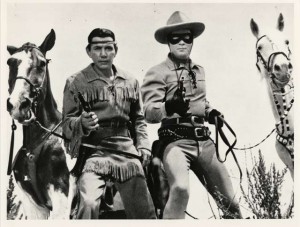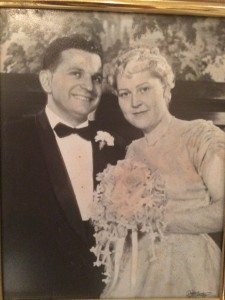Write a 600 to 1000 word blog that explains the connections you have found in context with that part of the novel, or in a general context with the entire novel. Be creative, be critical and ask questions.
I was assigned pages 70 to 83 of Green Grass, Running Water, and here are my thoughts on it!
The Garden
My section began with a story being told, that of Coyote, GOD, First Woman and Ahdamn in the garden. The Christian tale of the Garden of Eden is parodied by this story, with the trickster Coyote thrown in for good measure. Coyote, mischievous as always, manages to make GOD believe he did not eat any of his food, and therefore escapes his wrath. First Woman and Ahdamn (cough Adam cough), on the other hand, are found to have broken the “Christian rules” (King, 71), making GOD angry. With that, First Woman decides they should leave, and they do, with GOD throwing a tantrum after they have left. “You can’t leave”, GOD says, “because I’m kicking you out” (King, 72). But by that point they are already gone.
When I initially noticed the Garden of Eden parody I assumed that Coyote would be forced into the role of the serpent, the tempter. Instead I was pleasantly surprised that there was no temptation, merely First Woman challenging the authority of the supposed ‘GOD’. When GOD introduces themselves First Woman is unimpressed. “Funny”, she says, “You remind me of a dog” (King, 70). First Woman’s lack of regard for GOD is telling, and it highlights the fact that they are not her GOD, merely someone who has taken on a name.
Lone Ranger and Tonto
As First Woman and Ahdamn continue their journey away from the garden, they run into a spot of trouble. This trouble appeared in the form of a bunch of dead white guys, aka dead rangers. These bodies are laid at the feet of the two Indians as it “looks just like the work of Indians” (King, 74).
This begs the question of, what exactly does the work of Indians look like? We aren’t given an explanation for how these rangers were killed, after all. Was it a stereotypical tomahawk to the forehead? Did these supposed Indian murderers leave remnants of a traditional ceremony around the bodies? I suppose these will never be answered, as before First Woman and Ahdamn could be arrested, First Woman saved the day, by becoming the Lone Ranger and claiming Ahdamn as her sidekick, Tonto.
With their doubts about the duo assuaged the live rangers gallop off “looking for Indians and buffalo and poor people and other good things to kill” (76). And where was GOD for all of this? Still in the garden, alone.
The real garden
My section then cuts back to Dr. Hovaugh at the institution, who is being badgered by a police officer, Sergeant Cereno. Cereno was an interesting name choice, and one that I had to investigate further. It appears to be connected to Benito Cereno, a novel concerning the exploits of a slave rebellion on a slave ship. Cereno was one of the white slavers, making his appearance in Green Grass, Running Water as another white authority figure very purposeful. Cereno is unwilling to see the escapees in the same way as Dr. Hovaugh does. He sees them, despite their as potentially dangerous. Why? The reader has to assume it is due to their being Indian, or perhaps their depression. Either way, they are alien to the Sergeant, and therefore “they might be dangerous” (King, 79).
Lionel the Salesman
Lionel stuck out in this passage due to his apparent inability to communicate. Bill Bursum, whose name most likely comes from the defeated Bursum Bill of the 1920’s, is the first to steamroll over Lionel. Lionel tries to say he isn’t interested and that he wants to go back to school, but Bursum just keeps going. “I’ve got a gold jacket that’ll fit you”, Bursum explains, and in the end Lionel wears it (King, 81).
Lionel also runs into issues with his parents. He is discussing modern things, such as televisions and stereos, and his father is having a completely different conversation about creating new poles. (Upon my initial reading I assumed the poles were totem poles, and I thought it was a perfect example of King showing the collision of modernity and tradition, but upon further thought I realized that the type of pole isn’t actually specified. It could be a totem pole, a telephone pole, who knows!) The ‘modern world’ continued to call to Lionel, and he stayed at Bursum’s shop for years. Upon running into his cousin he finds himself referred to not as Lionel, but as ‘John Wayne’. Is that what Lionel has become during his time as a “city Indian” (King, 80)? An aging white cowboy?
Reflections
When I read Green Grass, Running Water I picked up on some of the symbolism/allusions throughout the novel, but this assignment forced me to investigate and reveal others that I missed on the first time around. Some are so subtle, such as Bill Bursum’s name, that unless you had prior knowledge of that specific defeated Bill it would simply slide past. “The allusions”, King explained in an interview, “aren’t to get at the reader but to blur the line between imagination and reality” (Ross, 1).
Thank-you for reading! Comment and let me know what you think, or if you noticed anything that I missed!
Works Cited:
“Benito Cereno.” Bookcover. Feedbooks. Web. March 13 2015. http://covers.feedbooks.net/book/3381.jpg?size=large&t=1425660843
“The Bursum Bill.” Canton Asylum for Insane Indians. Carla Joinson. Web Blog. March 13 2015. http://cantonasylumforinsaneindians.com/history_blog/the-canton-asylum-for-insane-indians/the-bursum-bill
Carson, Johnny. “Ed Ames Teaches Johnny Carson to Throw a Tomahawk.” Online video clip. Youtube. Youtube, August 20 2012. Web. March 15 2015.
Chisum. “John Wayne, 1969.” Photograph. IMDB. Web. March 15 2015. http://www.imdb.com/media/rm596940800/nm0000078?ref_=nmmd_md_pv
Chisum. “John Wayne, 1970.” Photograph. IMDB. Web. March 13 2015. http://www.imdb.com/media/rm4036204544/nm0000078?ref_=nmmd_md_pv
“Coyote.” Godchecker. Native American Mythology. Web. March 15 2015. http://www.godchecker.com/pantheon/native-american-mythology.php?deity=COYOTE
King, Thomas. Green Grass, Running Water. Toronto: Harper Perennial, 1993. Print.
“Lone Ranger Original.” Photograph. Moviecarpet. Web. March 13 2015. http://moviecarpet.com/wp-content/uploads/2012/10/Lone-Ranger-Original.jpg
Val, Ross. “One Tricky Coyote.” The Globe and Mail 11 March 1993. Print.




Recent Comments